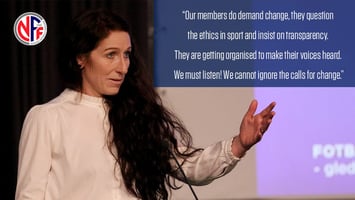On 31 March 2022, Lise Klaveness took the podium during the FIFA Congress in Qatar. The words that...
The how-to guide for organisational culture and performance
The Josh Bersin Company just released it's newest Big Reset playbook, this time focusing on Organisational Culture and Performance. As most of the playbooks, it's a must-read.
The Big Reset playbooks are a series of collaborative sprints for HR executives, to tackle the workforce challenges of the pandemic. To date, approximately 400 leaders have participated in these sprints. The Big Reset groups meet to brainstorm on ways to address the post-pandemic era, and the forever changed role of leadership around the world.
This time around, it’s organisational culture that has been up for discussions. One of the biggest challenges for organisational culture, is that it can easily be perceived as the touchy-feely stuff. Hard to measure, hard to get a grip on and constantly changing. An area that is handled by HR, and only indirectly linked to profitability and business strategy.
This couldn’t be further from the truth.
Every organisation has its own unique culture. And not only can you see it, but you can feel it at the very moment you meet it’s people or step into the offices. How are you greeted, what are people wearing, what’s hanging on their walls. Are they talking to each other, what are their visible diversities, where are we meeting. If you take a minute and take it all inn, your brain forms an impression of the culture in seconds.
You can define culture in a million different ways. From long and scientific approaches, to the easier “the way we do things around here”. Which either way you prefer, the outcome is the same. Culture is shaped by behaviour. Not the things we say that we do, but rather how we actually behave in various settings. If you observe a meeting, you get a crash course in the behaviours defining the culture. When does the meeting start, how clear is the agenda, how are we interacting and how strong is the trust and psychological safety.
Culture can make-or-break an organisation. And after the pandemic, it has gotten even more complicated defining and shaping culture. But if you are to attract and retain the best minds, having a structured approach is a no brainer.
If you Google “culture”, you get about 6,800,000,000 results in less than half a second. Narrow it down to “organizational culture”, and you’re left with bout 428,000,000 results. And let’s be honest, there is a lot of less good or just simply terrible stuff out there. So where can you start? What is the best first steps to make? During the last six years, I have worked with organisations with a wide range of purposes and missions. Here’s a few tips, free of charge, for the best way to start:
- Culture must be anchored at the very top of the organisation, and not in HR. If you don’t have top management support and commitment, you’re never going to make it when the going gets tough. And trust me, it will.
- Start with defining where you are today. There are multiple ways to measure culture. One of my favourites is the Barretts value assessment, that provides deep insight into todays state at the same time as it provides a way forward.
- Define your strategy. Once again, there are many ways that leads to Rome. The Big Reset research from Josh Bersin includes a roadmap where you focus on growth mindset, purpose, communication, support, collaboration, appreciation and wellbeing.
- Take your strategy from ideas to behaviour. The proof of the pudding is in the eating, and this is where you discover the taste. Too many well-defined and hard earned strategies has ended up as dust collectors in a drawer. Don’t let it happen to yours!
Of course, the old laissez-faire approach to leadership is also an option. Close your eyes, and let culture develop on its own. For some this might work (but probably won’t), for most this will be an expensive mistake. There's one thing that you can be 100% certain of, and that is that redefining a culture that has gone wrong is incredibly much harder than getting it right the first time.




Leave a comment